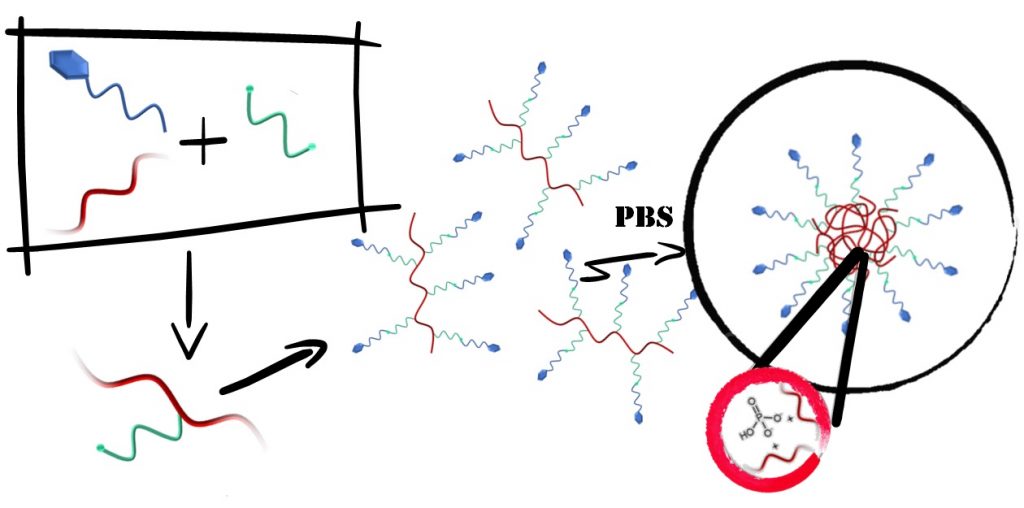Nanoparticles characterization for innovative biomedical approaches
|Nowadays, nanoparticles play a crucial role in biomedicine, improving therapy, diagnosis and monitoring of several diseases. Polymeric self-assembled nanoparticles, and in particular the so-called PANs (supramolecular polyamine phosphates nanoparticles, formed by complexation of polyamines and phosphate ions), have large potential in different drug delivery approaches, due to their capacity of carrying both hydrophobic and hydrophilic drugs, their pH responsiveness, as well to multiple functionalization and targeting options offered. But how is it possible to create and characterize such nanoparticles?

Prof. Maria Grazia Ortore (Marche Polytechnic University) and Dr. Sergio Moya, PhD (biomaGUNE, Basque Research and Technology Alliance) and colleagues studied how polyallylamine hydrochloride (PAH) polymers, to which polyethylene glycol (PEG) was bound, can form particular nanoparticles; moreover, the nanoparticles were further modified with glycans (mannose, glucose, or lactose), molecules that play a fundamental role in biological signaling and recognition events that can be mimicked for targeting and specific drug delivery. Using transmission electron microscopy (TEM), dynamic light scattering (DLS) and small angle X-ray scattering (SAXS, available at the Austrian CERIC partner facility at Elettra Sincrotrone), scientists characterized PEGylated PANs, while fluorescence correlation spectroscopy (FCS) was used to study the association of labelled glycol-PEGylated PANs with proteins. Researchers then found out that Glyco-PEG PANs are nanoparticles with very controlled size features (basically, single chain nanoparticles formed by one or two chains of polymers), and that PEGylation with additional glycan functionalization allows interacting with proteins, such as lectins, by specific interactions with accessible sugar groups.
These findings could lead to feature application of PEGylated PANs as alternatives to glycosylated gold nanoparticles to develop, in association with glycans, novel antibody-based biosensing and diagnostics approaches.
ORIGINAL ARTICLE:



